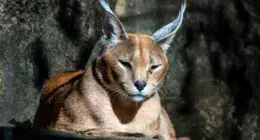Nectar and pollen are both important components in the life cycle of plants and the survival of bees. Nectar is a sweet liquid produced by flowers to attract pollinators, while pollen contains male gametes that fertilize female plants. Bees use nectar as a source of carbohydrates for energy production and collect pollen as protein-rich food for their young.
What is nectar?
(Image by Kanenori from Pixabay)

Nectar is a sweet, watery substance produced by flowers and other plants. It’s used as food for bees, butterflies, hummingbirds, and other pollinators. Nectar contains complex sugars that provide energy to these animals while they’re busy pollinating.
The process of nectar production begins inside the flower’s nectary glands. These glands are located in different parts of the flower depending on the species. The gland produces nectar continuously throughout the day and night up until the flower wilts or dies.
Bees collect nectar using their long tongues which can reach deep into flowers where it’s produced. Once collected, bees store nectar in their honey stomachs then bring it back to their hives where they convert it into honey through regurgitation and evaporation.
Interestingly enough, not all plants produce nectar with the same composition or concentration of sugar content. Some plants have evolved to produce low amounts of highly concentrated sugar solution-like maple trees while others secrete large volumes of sugary water like sunflowers do!
What is pollen?
(Photo by Timothy Dykes on Unsplash )

Pollen is a fine powder that consists of male reproductive cells of plants. It is produced by the anthers of flowers and carried by wind or insects to reach the female reproductive organs for fertilization.
Each pollen grain contains genetic material from its parent plant, which means it carries unique properties that help identify its origin. This feature makes pollen an essential tool in studying plant biodiversity and evolution.
While many people associate pollen with allergies, it plays a crucial role in maintaining ecological balance as well as food production. Pollinators like bees, butterflies, birds, and bats rely on pollen as a source of protein-rich food while simultaneously transferring it between plants for pollination.
Certain types of pollen are also used to create various products such as propolis (a natural antibiotic), royal jelly (a nutrient-rich substance), and bee bread (fermented nectar mixed with pollen).
Despite being commonly associated with seasonal allergies, understanding the significance of pollens can help us appreciate their importance beyond just causing sneezes!
Nectar Vs. Pollen – Key differences
Nectar and pollen are two distinct substances that play a significant role in the life cycle of plants and animals. Nectar is a sweet liquid produced by flowers to attract pollinators such as bees, butterflies, and birds. On the other hand, pollen is the tiny grains found on the anthers of flowers which contain male reproductive cells.
One key difference between nectar and pollen is their physical appearance. Nectar has a watery texture with a sugary taste while pollen comes in various colors like yellow or orange and has a powdery texture.
Another key difference lies in their functions within nature. Pollen plays an essential role in plant reproduction as it fertilizes female flower parts, resulting in seed production. Meanwhile, nectar serves to reward pollinators for visiting flowers so they can spread pollen from one flower to another.
Furthermore, while both nectar and pollen are consumed by bees, they serve different purposes within bee colonies. Bees use nectar as fuel for energy production while they store pollen as protein-rich food for their young ones.
Although both nectar and pollen are crucial components of flowering plants’ survival strategies, they differ significantly concerning physical characteristics and function within natural ecosystems.
How do bees use nectar and pollen?
Bees are renowned for their role in the pollination process, but they also benefit from gathering nectar and pollen. Nectar is an energy source that bees use to fuel themselves, while pollen provides them with essential nutrients.
When a bee collects nectar, it stores it in its honey stomach. This special organ allows bees to transport nectar back to their hive without digesting it. Once the bee returns home, it regurgitates the nectar into another bee’s mouth until enough water has evaporated to create honey.
Pollen, on the other hand, is collected by bees using specialized hairs on their legs called “pollen baskets.” Bees mix this protein-rich substance with saliva and store it in cells within their hives as “bee bread,” which serves as food for developing larvae.
In addition to providing nourishment for bees and honey production, collecting nectar and pollen also plays a crucial role in plant reproduction. When bees visit flowers searching for nectar or pollen, they inadvertently transfer pollen from one flower to another through a process known as cross-pollination.
The relationship between bees and these natural resources is mutually beneficial – plants rely on them for reproduction while bees rely on them for sustenance.
Is honey from pollen or nectar?
Honey is a sweet, viscous liquid that is produced by bees and consumed by humans for its taste and nutritional value. But where does honey come from? Is it made from pollen or nectar?
In fact, honey is made from both pollen and nectar. Bees collect nectar from flowers using their long tongues and store it in their stomachs. Enzymes in the bees’ stomachs break down the complex sugars in the nectar into simpler sugars, which are then regurgitated into the hive.
Once inside the hive, worker bees add enzymes to further break down the sugar molecules before storing it in hexagonal wax cells called honeycombs. The bees then fan their wings over the honeycombs to evaporate moisture out of the nectar until it becomes thick and syrupy – this process turns it into honey!
But what about pollen? While pollen doesn’t directly contribute to making honey, it plays an important role in a bee’s diet as a source of protein. Bees collect pollen on their bodies while they visit flowers for nectar-gathering, then bring back these tiny grains to feed developing larvae.
Without both these natural resources – nectar for energy and pollen for nutrition – we would not have deliciously golden jars of pure organic honey!
Uses of nectar and pollen
Nectar and pollen may have different purposes in nature, but they both play vital roles in the ecosystem. Nectar has a sweet taste and is used as food for pollinators such as bees, butterflies, and hummingbirds. Pollen, on the other hand, is responsible for plant reproduction.
Apart from their natural functions, nectar and pollen also have various uses that benefit humans. One of the most popular uses of nectar is its conversion to honey – a natural sweetener that can be added to food or drinks. Honey also contains antioxidants that provide health benefits such as fighting against inflammation.
Pollen has several medicinal properties too. It is commonly used to alleviate allergies by boosting the immune system’s response to allergens gradually. Moreover, it contains vitamins A, B complex (B1,B2), C,D,E,K and minerals like calcium, potassium among others which make it an excellent source of nutrients.
Nectar extracted from flowers can also be transformed into syrup or flavorings for baked goods or desserts giving them a unique floral taste profile. In addition to this people use bee propolis made out of extracts from resinous substances collected by bees in order to prevent cavities due its antimicrobial properties .
Nectar and pollen are not just beneficial for pollination or survival but have many practical human applications making them essential resources with multiple uses across industries including culinary arts , agriculture , pharmaceuticals etc .
Featured Image By – Christoph Polatzky on Unsplash









